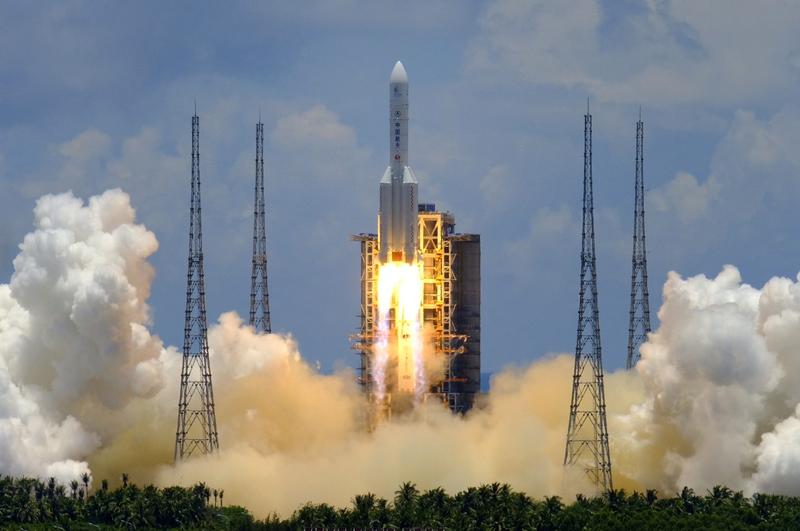 China's unmanned Mars probe, Tianwen 1, blasts off on a Long March 5 rocket in Hainan, July 23, 2020. (GUO WENBIN / CHINA DAILY)
China's unmanned Mars probe, Tianwen 1, blasts off on a Long March 5 rocket in Hainan, July 23, 2020. (GUO WENBIN / CHINA DAILY)
China's Tianwen 1 Mars probe has begun to conduct scientific operations, according to designers of one of its scientific payloads.
The Mars Energetic Particle Analyzer, mounted on the spacecraft's orbiter, was activated late Friday night and has transmitted data back to ground control, according to a statement from the Lanzhou Institute of Physics of the China Academy of Space Technology and the Institute of Modern Physics of the Chinese Academy of Sciences.
The Mars Energetic Particle Analyzer, mounted on the spacecraft's orbiter, was activated late Friday night and has transmitted data back to ground control, according to a statement
It is the first of 13 scientific apparatuses on the probe to start operating and will be the longest working device during the spacecraft's seven-month journey toward Mars' gravitational field, according to the statement.
The instrument is tasked with measuring the spatial radiation environment of Mars and along the Earth-Mars transfer trajectory, as well as investigating a variety of topics including the energy spectrum and changing pattern of energetic particles in the spatial environment.
Its first mission is studying the spatial radiation environment along the Earth-Mars transfer trajectory, according to designers.
ALSO READ: China's first Mars mission faces unprecedented challenges
Research and development of the cutting-edge device began in April 2016 and took about 2.5 years. It was delivered to Tianwen 1's maker in January 2019, according to the statement.
In another development, the Tianwen 1 probe sent back a picture of Earth and the moon, which was taken by its optical navigation sensor when it was about 1.2 million kilometers away from Earth at the time the photo was shot, to ground control on Monday, the China National Space Administration said on Tuesday.
China launched Tianwen 1, the country's first independent Mars mission, on July 23 at the Wenchang Space Launch Center in Hainan province, opening the nation's planetary exploration program.
In another development, the Tianwen 1 probe has sent back a picture of Earth and the moon, which was taken by its optical navigation sensor when it was about 1.2 million kilometers away from Earth at the time the photo was shot, the China National Space Administration said
If everything goes according to schedule, the 5-metric ton Tianwen 1, which consists of two major parts-the orbiter and the landing capsule-will travel more than 400 million kilometers in nearly seven months before getting captured by Mars' gravitational field.
After the probe enters orbit around Mars, it will revolve around the planet for two and a half months to investigate the landing capsule's preset landing site before descending to a certain altitude to release the capsule.
The capsule will then fall through Mars' atmosphere and take a succession of sophisticated steps to decelerate and land softly on the Martian soil.
READ MORE: China's probe radar to explore internal structure of Mars
The landing has been scheduled to take place around May in the southern part of Mars' Utopia Planitia, a large plain within Utopia, the largest recognized impact basin in the solar system, according to the China National Space Administration.
Weighing about 240 kilograms, the rover has six wheels and four solar panels and is able to move 200 meters per hour on Mars.
It carries six scientific instruments including a multispectral camera, ground-penetrating radar and a meteorological measurer and is expected to function for about three months on the planet.
In the Martian skies, the orbiter will continue circling around the red planet for mapping and measurement tasks with its seven scientific apparatuses such as high-resolution imager and magnetometer.
It will also relay signals between ground control and the rover, the administration said.


